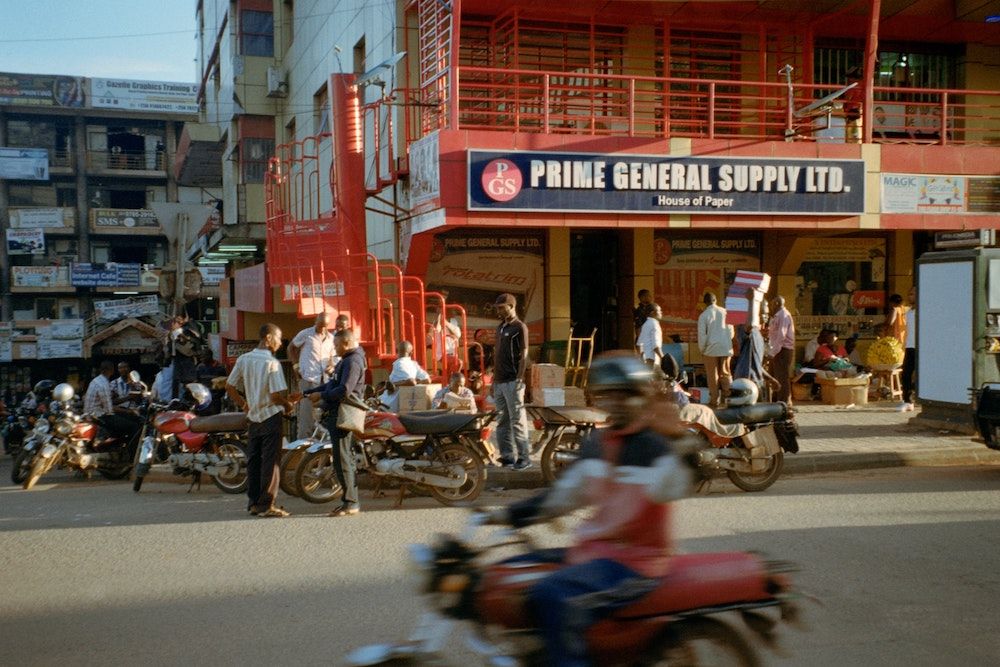COVID-19 has hit economies around the world, with devastating effects on businesses. Businesses in frontier and emerging economies may face the worst debt crisis since the early 1980s. Since the advent of COVID-19, more than US$100 billion in capital has flowed out of these markets—three times as much as in the first two months of the 2008 global financial crisis. Remittances are poised to fall by an additional $100 billion this year alone.
Financial outflows and a rapid decline in inflows (including remittances) will have a particularly severe impact on micro, small, and medium-sized enterprises (MSMEs), which form the backbone of frontier and emerging economies and are often concentrated in high-priority sectors—such as agribusiness and tourism—that are crucial to economic activity and employment. The World Bank estimates that small enterprises account for more than half of total employment in such economies. While many wealthy industrialized countries and advanced emerging markets have found ways to pump money into struggling MSMEs, most developing countries lack the budgetary bandwidth and ready-to-go disbursement mechanisms to do so.
Development finance institutions (DFIs) can support key sectors of the economy and their constituent MSMEs by administering the right mix of capital mobilization, policy advice, and technical assistance to local financial institutions. DFIs might need to consider how they deploy rapid technical assistance to accompany timely adjustments to their loan mechanisms with local financial institutions. In doing so, it is important that they stay attuned to the development part of development finance.
The Domino Effects
The immediate challenge for development policy makers and practitioners is to avoid the domino effect whereby a credit crunch on banks and microfinance institutions cascades into the COVID-stricken MSME sector—or the reverse situation whereby defaults by MSMEs threaten the soundness of the financial institutions that serve them. Microfinance institutions are particularly at risk because they are largely dependent on MSME loans and lack adequate cash reserves to reschedule loans beyond a few months. These lenders will require external support to bridge the gap and provide more flexibility on loan repayments.
An article in The Economist cites a survey conducted in Uganda by FINCA Impact Finance, a U.S.-headquartered network of microfinance lenders in 20 countries, which found that 70 percent of customers surveyed had no emergency savings and were unable to carry on their businesses due to the effects of Coronavirus-related lockdowns. The same article includes references from a microfinance lender in South Africa and a commercial bank in Bolivia, indicating that 70 to 85 percent of small businesses have been unable to operate in recent months.
Under normal circumstances, DAI’s microfinance institution clients consider a 2 percent default rate on customer loans an acceptable level. In the wake of COVID-19, these same microfinance institutions are observing defaults and payment arrear rates at significantly higher levels to warrant alarm.
Rapid Credit Diagnostics Can Help
Multilateral institutions and DFIs have launched multibillion-dollar relief packages to support economic stabilization initiatives, including efforts to bolster the operations of small businesses. Rapid credit risk diagnostics to evaluate the health of local financial institutions—and the risk profiles of their borrowers—should be part of any such effort to stabilize MSMEs. Such diagnostics can be applied to a range of financial institutions that receive support from DFIs, whether these be commercial banks, local government-owned development banks, microfinance institutions, financial cooperatives, or not-for-profit credit and savings organizations.
We offer the following guidance on how local financial institutions, supported by DFIs and central banks, can analyze their customer base and make sense of their credit risk:
- Systemic risk: Does the institution’s credit exposure to MSMEs pose a systemic risk to the national financial sector?
- Sector exposure: Is credit exposure concentrated in a particular sector (for example, tourism)?
- Geographic concentrations: Does the financial institution have a geographic concentration of borrowers in COVID-affected areas
- Secured vs. unsecured: Are loans secured (collateralized) or unsecured (non-collateralized), and what is the proportion? Is it legally and practically possible, or ethically reasonable, to seize or liquidate collateral given the crisis?
- Liability exposure from deposits: Does the institution intermediate financial products beyond credit? For example, if it is also taking customer deposits, the institution has to balance more complexity from such a liability. Such markets often have limited deposit protection schemes, and risk from a credit portfolio may threaten precious household and business savings, if the institution gets in trouble.
- Borrower exposure: Beyond financial institution loans, what other indebtedness or liabilities are MSMEs exposed to?
- Vulnerabilities of borrowers: What are the sources of liquidity or income among borrowers? Are they diversified, or are borrowers reliant on a single source
Potential Solutions
Once financial institutions understand the credit risks in their portfolios, they can in partnership with DFIs respond and establish internal solutions. Among the measures we recommend:
- Coordinate discussions with central banks regarding policy approaches—advocating against policy measures that put the stability of the sector at risk (such as mandated debt forgiveness or highly subsidized loans), and for constructive measures to address funding liquidity constraints that take a long-term view of the sector’s sustainability (such as refinancing facilities and portfolio guarantees).
- Engage with your funders proactively, asking for modified terms or even additional funds to weather the crisis. Be transparent and set up regular communication with them to inform them of the measures you are taking. Consider opportunities to bring in new funders, including DFIs, many of which may be looking for opportunities to find ways to finance MSMEs in the crisis.
- Proactively engage with your customers, depositors, and borrowers, and show solidarity with clients and the communities they serve. Contact them frequently and make it easy for them to contact you and consider reducing fees for transfers and payments, lower minimum balances, or waive late payment fees to build customer loyalty.
- Keep banks open, offering extended hours if possible to avoid crowded bank halls; adapt physical spaces to ensure social distancing in branch offices; and reassure your clients you will remain open. And of course, ensure cleanliness and follow public health protocols.
- Segment customer portfolios and, for each segment, monitor and assess the impact of the crisis on the financial institutions, the business segments, and the local community. This segmentation could include not only the business size and sector, but also the role they play in that sector(for example, importers versus net exporters), which may cause them to be more or less affected. Segmenting by way of women-owned, youth-owned, or indigenous-owned businesses may also yield insights into the social value they bring to the communities in which they operate.
- Revise lending policies to fit the “new normal.” For example, adapt credit application processes to be more accessible for remote-working bank staff and online applicants, and less reliant on face-to-face interaction, and increase the use of digital tools for the loan process from application to underwriting to collection.
- Redesign credit products to fit the situation, recognizing that longer grace periods or some flexibility in repayment schedules may be needed while businesses try to increase turnover to pre-COVID levels. Offer short-term credit responsibly.
- Be a trusted source of reliable information from health officials and international organizations and share information with customers on how to access relief programs or funds from other sources.
- Safeguard special projects, which may have the greatest need—such as lending to low-carbon business initiatives or women-owned businesses.
- Partner with community savings and lending solidarity groups to support special projects that serve communities.
- Help create and maintain cash and digital finance networks to allow for purchasing and money transfers without physical contact.
- Monitor remittance flows in your region and engage with your remittance partners to gauge possible early warning signs of additional stress on your client base.
Even as wealthy industrialized economies face deep recessions, we must not forget the credit crisis that looms large for frontier and emerging economies. Now is the time to act to prevent further credit contagion and a potential domino effect on smaller commercial banks and microfinance operators—and the MSME owners and employees who depend on them for their livelihoods.







